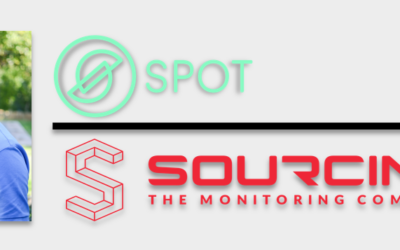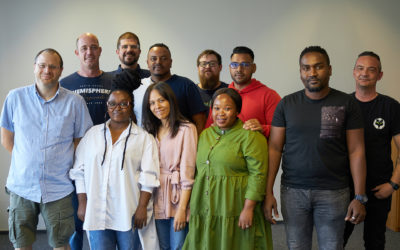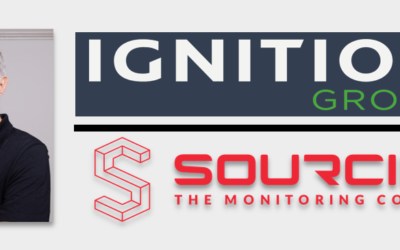Technology monitoring: not an event, a way of life
Read time 3min 50sec
Posted by: Kenneth Dolbey, New Business Development, Sourcing EMEA
Many of today’s business processes are externalised to a company’s customers through IT systems. Failures are difficult to hide and embarrassing.
Every business process owner needs to consider IT system monitoring from the start and not expect it just to get bolted on later. It’s not about tools and it’s not about searching for the silver bullet of monitoring systems over and over again.
You need to build monitoring in and it takes expertise, experience and operational excellence to deliver. Today, monitoring your technology systems needs to be a way of life. And it’s not a part-time job.
Monitoring is a crucial weapon in any organisation’s technology arsenal and it’s an ongoing and focused effort. Seeing it as a one-off purchase or as an ongoing-but-part-time job just isn’t going to do the trick.
Getting it right is important. Avoiding technology outages saves a lot of cash that would otherwise be lost through direct loss of sales, reputational damage or lengthy and expensive after-the-fact remediation.
With decades of experience in the field, the Sourcing team has earned some important lessons. Here’s our high-level, four-ingredient recipe for effective IT, technology and process monitoring:
- Take monitoring seriously. It’s not an afterthought or a part time endeavour.
- Tools do not make a Formula 1 team. The human using them makes the real difference.
- Experience, expertise and proven processes make monitoring work.
- When costed correctly, and accounting for the opportunity cost of outages, a trusted partner is both more effective and cheaper than doing it yourself.
PEOPLE AND PROCESSES MATTER
Priority one is to avoid the tool trap. Tool deployment is not monitoring and will only give you a false sense of security likely causing a loss of cash (and face) later. The trap typically happens in three ways:
Organisational silos divide and conquer you: instead of a company-wide approach there’s a tool for cloud, a tool for the client-facing portal, a tool for networks, a tool for servers, etc – we call it “tool soup”. There’s no single source of truth for any given failure. In an outage, each department can be functional in isolation, but the outage remains.
Making monitoring a way of life becomes very difficult. Everyone has a tool and monitoring is usually a part time job for overworked people for whom monitoring is important but not urgent.
What’s needed is a team of specialists, dedicated to the art and science of monitoring technology and processes
Next organisations treat monitoring as an event. They run an expensive due diligence exercise to evaluate leading tools (some free like ours, and some extremely expensive). Tools are successfully deployed, and might even work well during the honeymoon period. But when the honeymoon’s over and the application landscape or business priorities change, monitoring gets left behind (remember, it’s usually a part-time job for someone).
Then a business-critical outage happens, tools are blamed instead of the monitoring strategy. New tools are selected instead of solving the focus and expertise issue. You are in the tool trap.
Lastly there’s the “shelfware” issue. Companies make large investments into evaluation and selection, but the tools ends up gathering dust on the shelf, or the people who deploy them move on, taking the intellectual property with them. Managers carry on as usual, assuming all’s well.
What’s the common thread here? There is no centre of monitoring competence – nobody is accountable for the entire picture.
SPECIALISATION SAVES MONEY, EFFORT AND EMBARRASSMENT
What’s needed is a team of specialists, dedicated to the art and science of monitoring technology and processes. The team should include three types of people:
- Techies who want to know how technology works and what it is trying to tell them.
- Integration specialists who understand the links between systems and business and how to follow the breadcrumbs to isolate a fault.
- Dedicated specialists ready to get the right contact out of bed to prevent (or resolve) any business-critical outage.
It all must happen in an increasingly complex technology environment. And don’t think moving to the cloud will magic away your monitoring concerns. Just think of the recent global WhatsApp outage if you doubt this.
A TRUSTED MONITORING PARTNER: LESS HEADACHE, FOR LESS MONEY
A carefully chosen partner means faster access to monitoring best practices – usually for less than if you did it yourself. Your monitoring headaches largely disappear because your monitoring is kept up to date by specialists who have earned their stripes over many years. We simultaneously embed our people and proven processes into your processes.
We become your monitoring department; you only pay for a slice of the expertise required in all areas, because we can offer you economy of scale.
There’s also no setting up dedicated after-hours teams, no learning what and how to measure your technology and product landscape, and no expensive mistakes along the way. There’s no loss of institutional knowledge when your in-house specialists resign.
Monitoring is a focused, never-ending journey that should be embedded in your business strategy
Just focus on your core business while experts monitor your IT, technology and product infrastructure better than you could have done, for less.
Monitoring needs to be a way of life. Today’s business is externalised to clients via technology. The risk of reputational damage is significant – and hits fast and hard.
Monitoring is a focused, never-ending journey that should be embedded in your business strategy and has very little to do with tools and everything to do with expertise, focus and experience. Your landscape is changing and always will. Sourcing can help you guard both the client experience and your IT and product system’s reliability.



